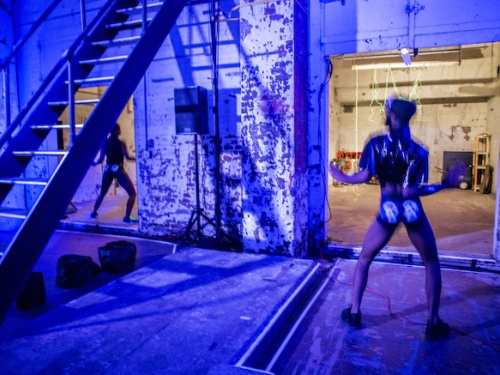ICA Student Forum: Performance Is Moving The Gallery
Stretching notions of performance in the gallery context
This post is part of a Bulletin series dedicated to the ICA Student Forum and designed to enable forum members to showcase their ideas across the ICA’s digital platforms, innovating and experimenting. In 2017, in addition to co-curating and delivering events, talks and workshops as part of the ICA Public Programme, Student Forum members will be working to generate a self-published zine to be launched in December 2017. Reflecting the Forum’s myriad of talents, interests and ideas, the zine will consist of four themes: Performance, Technology, Sound, and Rituals & Non-Spaces.
With the first post on Performance, I propose that we explore the ways in which contemporary performance exists in gallery spaces, and the role of its audiences therein.
“… the rationality that orientates the neoliberal condition of overall conditioning, the (i)logic that makes it all have not only some kind of sense, but what makes the conditions of contemporary conditioning gain real hegemonic sense, real normative sense, real neo-colonial, neo-racist sense, that (i)logic is governing conduct as if it were granting freedom.”
André Lepecki, Singularities: Dance in the Age of Performance
The gallery context has proven to be one of the most versatile spaces for the arts, enabling artists to transform them into white cubes, theatres, black boxes, virtual spaces and commercial centres. Artists may use the white walls to seduce or repel the viewer depending on the aims of their practices; galleries are as versatile for the arts as Google is in finding ways of collecting our data. These spaces instill visitors with a sense of freedom, enabling them to use their time as they wish, walking as if scrolling through their Facebook feed. Much like 'clicks' therefore, the time spent in front of a work or at an exhibition is of extreme value. In the field of performance, the gallery is a very fertile ground for research, as both the visitor and the work can move. The mobility of both the visitor and the work creates, inside the gallery, a laboratory for infinite possible worlds.
Galleries are as versatile for the arts as Google is in finding ways of collecting our data
I feel that an interesting way of engaging with performance is to ask ourselves the question: How do we want to address the public? Is it important that, by having so much freedom of engaging or leaving things behind, the visitor feels the weight of what it means to be able choose? What kind of subjectivity is produced or undone from these ways of working? Within current socio-political conditions, is the public able to take positions? How far can one go in promoting these responses or reflections? How far into the public can a work penetrate?
We are witnessing a continuous growth in the presence of the performing arts in galleries. The necessity to attract more and more visitors as well as institutions needing to create a more personal connection with their audiences seem to be the main agendas behind current investments; therefore, artists should engage critically with the opportunity to showcase their works. I am proposing that the question of producing and breaking with the stages that are being offered to performance need to be extended to its public: instead of just assuming an audience, the work could assume an 'ideological' audience. The difference in between these two audiences is that one will simply come and go, reflecting on the piece as an outsider whereas the latter is taken as an integral part of the piece and can, potentially, reflect the work – with the work, as the work, as an insider, as an infiltrator.
The mobility of both the visitor and the work creates, inside the gallery, a laboratory for infinite possible worlds.
Almost one hundred years ago now Antonin Artaud stated we need “to extract, from what is called culture, ideas whose compelling force is identical with that of hunger”. What is at stake in the idea of the 'ideological audience' is the “compelling force” it has to claim its identity. In other words, the viewer must have the feeling that by endorsing or leaving the work behind they are inventing/reaffirming their own set of values.
In the coming months we will see forum contributions that aim to challenge these borders in indirect ways, by presenting performances and performativities that emerge within the art gallery’s structures and features. Kefiloe Siwisa extends the idea of performativity to the realm of curating by discussing blackness in contemporary curatorial practices. Next, artist Anne de Boer follows up by discussing performativity in the digital realm. We hope that the contributions we share in the Student Forum series will open up different avenues of thinking about each of our given themes, and we look forward to welcoming you to the launch of our publication at the end of 2017. ■
This article is posted in: Articles, Student Forum
Tagged with: ICA Student Forum, Performance, Curation, Art









